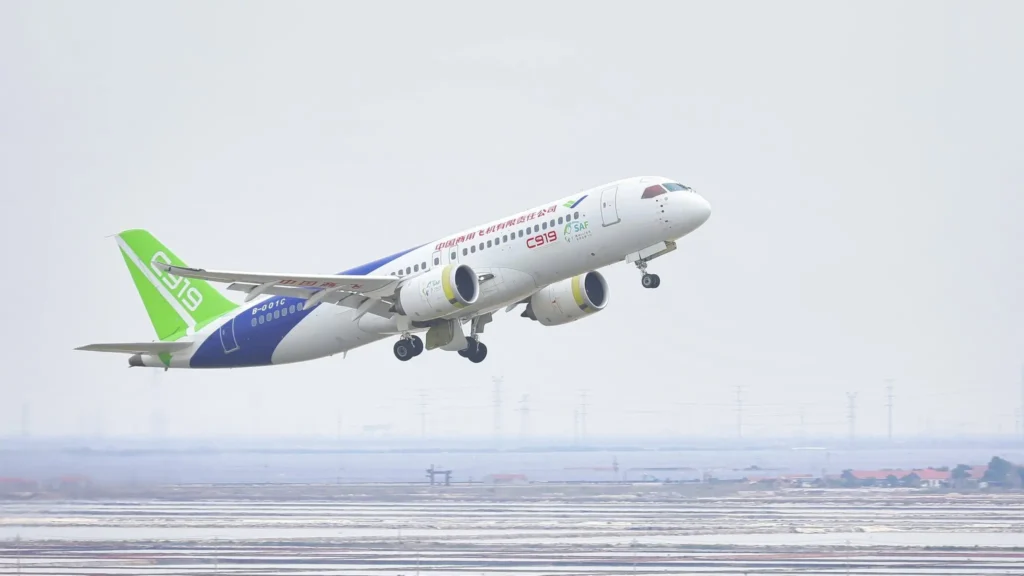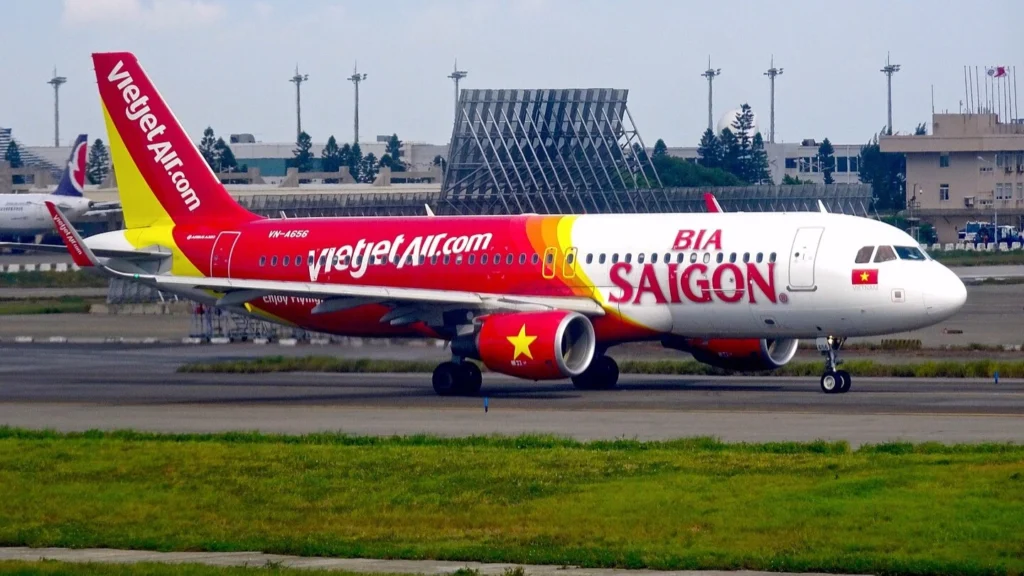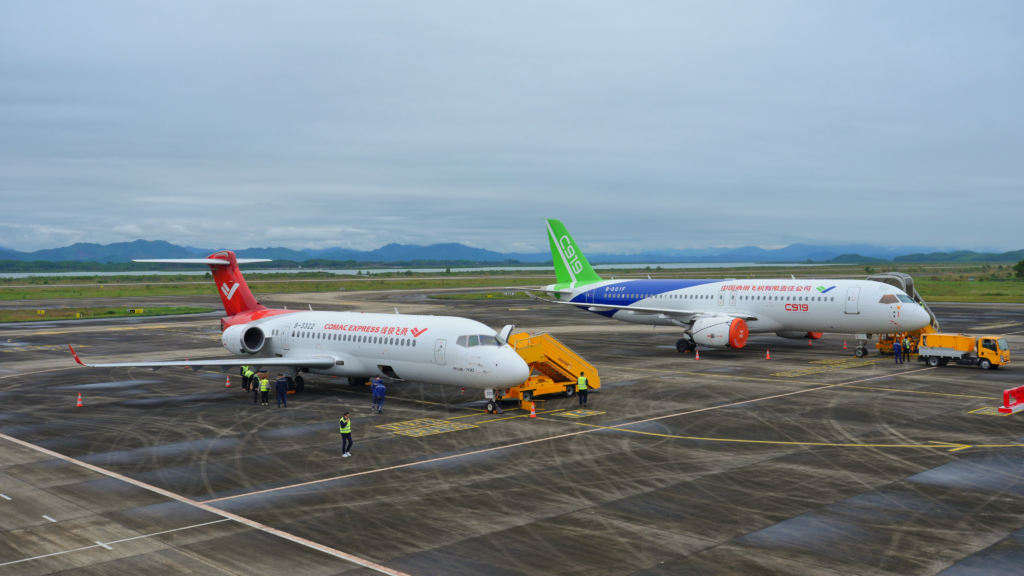
KUALA LUMPUR— Growing demand for air travel in Southeast Asia and delays in aircraft deliveries from Airbus and Boeing are pushing regional airlines to consider China’s COMAC C919 as an alternative.
According to Malaysia’s Transport Minister, Anthony Loke, budget airline AirAsia (AK) and the upcoming Air Borneo are among those showing interest in the COMAC C919 for their fleets. This comes amid a rise in flight volumes between Malaysia (KUL) and China (PEK), bolstered by visa-free travel and tourism growth.
 Photo: COMAC
Photo: COMACMalaysian Airlines Eyes C919 Order
Southeast Asia’s airline industry is expanding rapidly, but manufacturers Airbus and Boeing are struggling to meet demand. Both aircraft makers face significant production backlogs, forcing regional carriers to look for more accessible alternatives.
China’s Commercial Aircraft Corporation of China (COMAC), headquartered in Shanghai, has emerged as a key player with its C919 narrowbody jet.
The C919, promoted as a lower-cost rival to the Boeing 737 and Airbus A320, is drawing attention across the region. COMAC’s strategy aligns with current market needs: fast delivery times, competitive pricing, and sufficient capability for short-to-medium haul routes.
While the aircraft lacks European certification, Southeast Asian airlines—focused largely on intra-regional travel—are less concerned with this limitation.
Malaysia’s AirAsia (AK), one of Asia’s largest low-cost carriers, has expressed interest in evaluating the C919, though no firm agreements have been signed.
Similarly, Air Borneo, a new carrier based in Sarawak and set to launch later this year, is exploring the C919 for its potential fleet.
 Photo: Tony Fernandes LinkedIn Profile
Photo: Tony Fernandes LinkedIn ProfileMalaysia-China Aviation Ties Deepen
A joint Malaysia-China statement from April 2025 reinforced support for Malaysian airlines to operate Chinese-made aircraft. As regional tourism and business links strengthen, both nations have increased air connectivity significantly.
As of mid-July 2025, there are nearly 1,000 weekly flights between Malaysia and China—up from 870 in the previous year—reflecting a substantial capacity rise, SCMP reported.
Currently, 16 airlines operate routes between the two countries, including major Malaysian carriers such as Malaysia Airlines (MH), AirAsia (AK), and Batik Air (OD), as well as 11 Chinese carriers like Air China (CA), China Eastern Airlines (MU), and China Southern Airlines (CZ). These services largely connect cities such as Kuala Lumpur (KUL), Beijing (PEK), Shanghai (PVG), and Guangzhou (CAN).
Tourism is a driving factor behind this increase. New visa-free travel policies now allow Chinese tourists up to 90 days of visa-free entry to Malaysia over 180 days, leading to a sharp rise in visitor numbers—from 1.6 million in 2023 to 3.7 million last year—with further growth projected.
 Photo: By KCS – Own work, CC BY-SA 4.0, https://commons.wikimedia.org/w/index.php?curid=63501973
Photo: By KCS – Own work, CC BY-SA 4.0, https://commons.wikimedia.org/w/index.php?curid=63501973COMAC’s Broader Push Across Southeast Asia
Beyond Malaysia, COMAC has actively pursued deals with other Southeast Asian nations. Lao Airlines has already acquired two C919s, while Vietnam’s VietJet (VJ) is reportedly leasing the smaller ARJ21 (formerly referred to as the C909).
In Indonesia, COMAC is negotiating a possible C919 agreement with national carrier Garuda Indonesia (GA).
China is positioning itself as a reliable and timely aircraft supplier amid growing dissatisfaction with U.S. trade policies and Western supply chain disruptions. Analysts note that the C919’s lower cost is particularly appealing to Southeast Asia’s expanding budget airline segment.
Still, safety certifications remain a potential barrier for broader international operations. The European Union Aviation Safety Agency (EASA) has indicated the C919 certification process may take another 3–6 years. However, this delay is unlikely to deter Southeast Asian airlines focused on regional routes.
 Photo: Global Times
Photo: Global TimesRegulatory Approvals and Market Outlook
If any Malaysian airline decides to move forward with COMAC aircraft, approval from the Civil Aviation Authority of Malaysia (CAAM) would be required.
Despite certification limitations, the domestic and regional scope of these airlines’ operations fits within the C919’s capabilities.
The aviation landscape in Southeast Asia is shifting rapidly. With passenger numbers surging, fleet expansion is a necessity. COMAC’s C919, although not yet globally certified, offers a realistic and immediate solution for regional carriers seeking cost-effective and timely aircraft procurement.
Stay tuned with us. Further, follow us on social media for the latest updates.
Join us on Telegram Group for the Latest Aviation Updates. Subsequently, follow us on Google News
AirAsia Signs $12.3B Airbus A321XLR Deal During Malaysian PM’s France Visit
The post Malaysian Airlines Eyes New COMAC C919 Planes appeared first on Aviation A2Z.

 4 miesięcy temu
4 miesięcy temu












